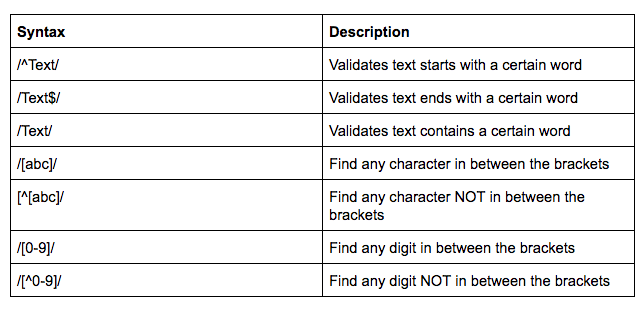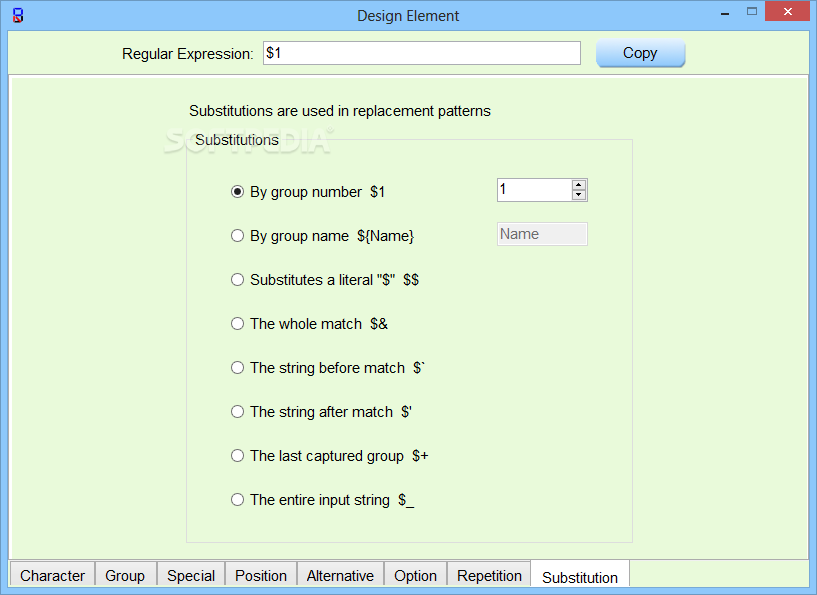

#Regex builder software#
Using a custom domain-specific language, built on top of ResultBuilders, rules can be combined to create a pattern, just like the one we made with our literal expression.Įven better, if we already have that literal, Xcode can convert it for us! It’s as simple as selecting the literal expression, right-clicking it, and choosing Refactor -> Convert to Regex Builder.Processing strings to extract, manipulate, or search data is a core skill that most software engineers need to acquire. So what if we could get the same behavior, but use a more verbose, natural-looking syntax? This is where Swift 5.7’s RegexBuilder APIs come in. Converting Existing Expressions to RegexBuilder For one thing, even our relatively simple example has a lot of parentheses and numbers whose meaning we will not necessarily remember when we return to it in a few months. It’s compact, but that advantage comes with issues. This specific format has one thing going for it over any other. Errors in the syntax will cause a build failure and ensure those issues never make it into production. The regex-aware compiler also means that the pattern isn’t parsed at runtime (although you can still do that). Xcode will now syntax highlight the expression, giving you a way to catch whole categories of errors. They look similar but have a few nice features in their favor.Įven for compact regular expressions like this one, Apple has given us some nice quality of life improvements in Xcode. That’s because Swift now offers support for regex literals. If you’ve used regular expressions in Swift before, you might notice that our pattern is no longer defined using a String. It might end up looking like this: func isAddressValid(_ address: String) -> Bool Fake (?:St|Ave|Blvd)\.?(?:\n|, )(?:Imaginary),? USA 5555$/.ignoresCase() With all of that work, we now have the basis to write our pattern. All of it should be case insensitive, with nothing before or after it in the string.
#Regex builder code#
And since Fake St crosses through a border between zip codes, we need to accept either zip code 55555 or 55556.Imaginary, USA either with a comma or without it.Either a newline or a comma followed by a space, but not both.Some of them may also include a “.” after St.


While we refer to Fake St for simplicity, some of our neighbors call it Fake Blvd or Fake Ave since there are no street signs to be sure. Fake St, Fake Blvd, or Fake Ave should all be accepted.On our street, odd numbers always end on the same side of the road and Fake St is a very busy street, so we rarely get to cross and meet the neighbors on the other side. A house number that is 2 or 3 digits long and ends with an odd number.Working step-by-step, we can define the rules we want to use to validate. An example of a valid address may look like this: let address = """ We decide the best way for our users to verify that they belong to our neighborhood is for them to enter their address so we can use a regular expression to check whether they meet our criteria.

Imagine that we are very close with the neighbors on our street and want to build an application for ourselves. What does it look like to “build” a regex pattern now and what are some of the new ways you might choose to work with that same expression in Swift 5.7? Let’s look at an example. Email addresses and non-standardized date formats are two classic examples.Īll of these problems can lead to a substandard experience and developers often choose to use expensive and complicated string processing and transformation APIs instead.Īpple and the Swift community are looking to alleviate some of that pain for us in Swift 5.7 and through improvements in Xcode 14 by introducing the RegexBuilder and making regexes feel like more of a modern first-class citizen in the language than it ever has before. These expressions can quickly become large and difficult to work through, especially in cases where the data being matched doesn’t have an established standard or where the standard is vague. Also, the difficulty to read and write also makes them difficult to understand. As useful as they are, they can also require a lot of memorization of esoteric symbols and escaped characters. Regular expressions (regexes) haven’t changed much since their introduction in the 50s and native language support for them has been similarly stagnant in its design.
#Regex builder how to#
IOS 16 tries to solve this by introducing a new intuitive way how to write and understand regular expressions with the RegexBuilder. Remember the last time you were trying to validate an email address? Or you struggled to create a RegEx to find all the matches for a specified pattern in a string? Chances are high that you ended up just copying a RegEx (that you didn’t understand) from the internet.


 0 kommentar(er)
0 kommentar(er)
